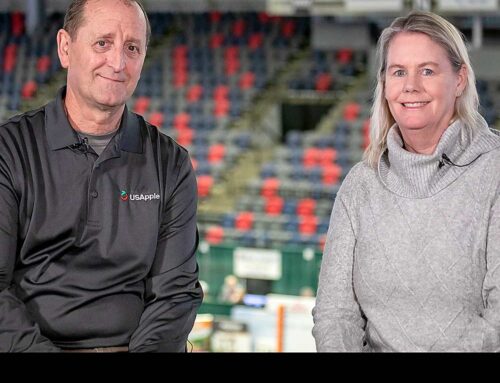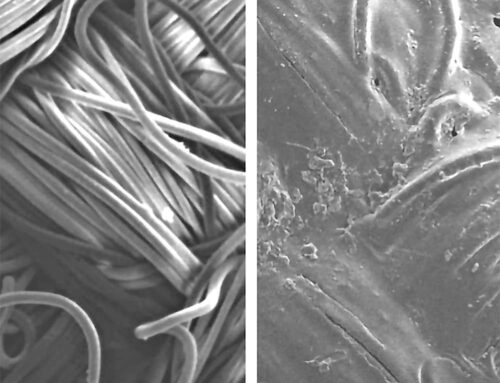
“We need a better way of knowing the susceptibility of plants.”
—Beth Hall
Your local TV weather person gives some good information—like how to dress your kids today as they wait for the school bus. But when it comes to serious stuff—how weather will, or did, affect the blossoms in your fruit orchard, not so much.
Fruit growers hear the forecasts, and it’s pretty well up to them to figure out what they mean. Should they turn on the irrigation, fire up the smudge pots, or do nothing?
The Midwestern Regional Climate Center is working on a new project called the Vegetation Impact Program that people there think will add depth to weather information.
As the name suggests, for growers the most important aspect of weather is its impact on vegetation, and that of course varies by the stage of the vegetation’s development.
Beth Hall is director of the Midwestern Regional Climate Center. Based at the University of Illinois, it is one of six regional climate centers, several of which are working on special projects that might one day be national in scope.
So, while it was originally developed for the nine states in the Midwest, where fruit and specialty vegetable crops are grown, it has since expanded to cover the 48 contiguous states. And anybody anywhere can participate online.
The general idea, Hall said, is to make the program interactive for a select group of subscribers, a group that would include weather experts at the National Weather Service who make the forecasts, growers who know the conditions on the ground, and specialists at universities and extension services who can help interpret data.
In this collaboration, the weather experts—state climatologists and weather forecasters—would predict a freeze, for example; growers and other “vegetation experts” would report the stage of development of a crop or crops; and the extension specialists would explain what temperatures do to vegetation at a particular stage of development.
From this combined information, the National Weather Service will determine whether or not to issue a special weather alert such as a frost advisory or freeze warning.
“Anyone interested in participating in this project, either as a forecaster or someone who can provide -information on the current state of local vegetation, is welcome to subscribe to the project,” Hall said.
Missing piece
The missing piece has been the information on the current state of local vegetation. “We need a better way of knowing the susceptibility of plants,” Hall said. “National Weather Service forecasters tell us they’d like to hear from producers so they can be more sensitive to their needs.”
Those who understand their local vegetation’s current susceptibility to freezing temperatures need to advise weather forecasters whether or not to issue “headlines” when they see frosts and freezing conditions coming. Obviously, they don’t issue them in the dead of winter because vegetation is dormant. The key times are spring and fall.
Still, dormant vegetation is affected by extreme low temperatures in the dead of winter, and there are other stresses like high temperatures and extreme rainfall that affect vegetation during all seasons.
Hall spoke to growers during Southwest Michigan Hort Days late last winter, at the invitation of Mark Longstroth, Michigan State University extension fruit educator in southwest Michigan. Hall gives him high marks for contributing to local growers exactly the kind of information that should be available in regions all over the country.
Longstroth has developed a large database of information about the sensitivity of various fruits to various temperatures at various stages of development, which can be found at http://bit.ly/1j1e1E7.
Larger mission
The mission of the regional climate centers goes well beyond monitoring and observing weather. Weather observations—millions of pieces of data—are used
to develop knowledge of climate. Weather describes
the short-term conditions, while climate describes meteorological variables over long periods of time.
As we appear to be living in a time of rapid climate change, regional climate centers are now dealing with a dynamic system in which new weather observations are defining the new normal of temperature, precipitation, wind, and other aspects of climate.
The key mission of the National Weather Service is to protect the public by issuing warnings and advisories, Hall said. The regional climate centers were created nearly 30 years ago to synthesize the historical climatic data it needs to do that.
The MRCC frost/freeze project began in the fall of 2012, and the VIP program evolved out of that. The project has since developed it into a 12-month program covering the 48 contiguous states and is continually developing information for all the vegetation regimes in them—from deserts to tropics to tundra, Hall said. In addition, the information will move beyond frost/freeze and into other kinds of stresses, such as heat stress, drought monitoring, or floods.
All tools and products for this project are online at http://mrcc.isws.illinois.edu/VIP.
To be a subscriber on the project, send an e-mail to listserv@listserv.illinois.edu and put “subscribe freeze-list first name last name.” •




Leave A Comment